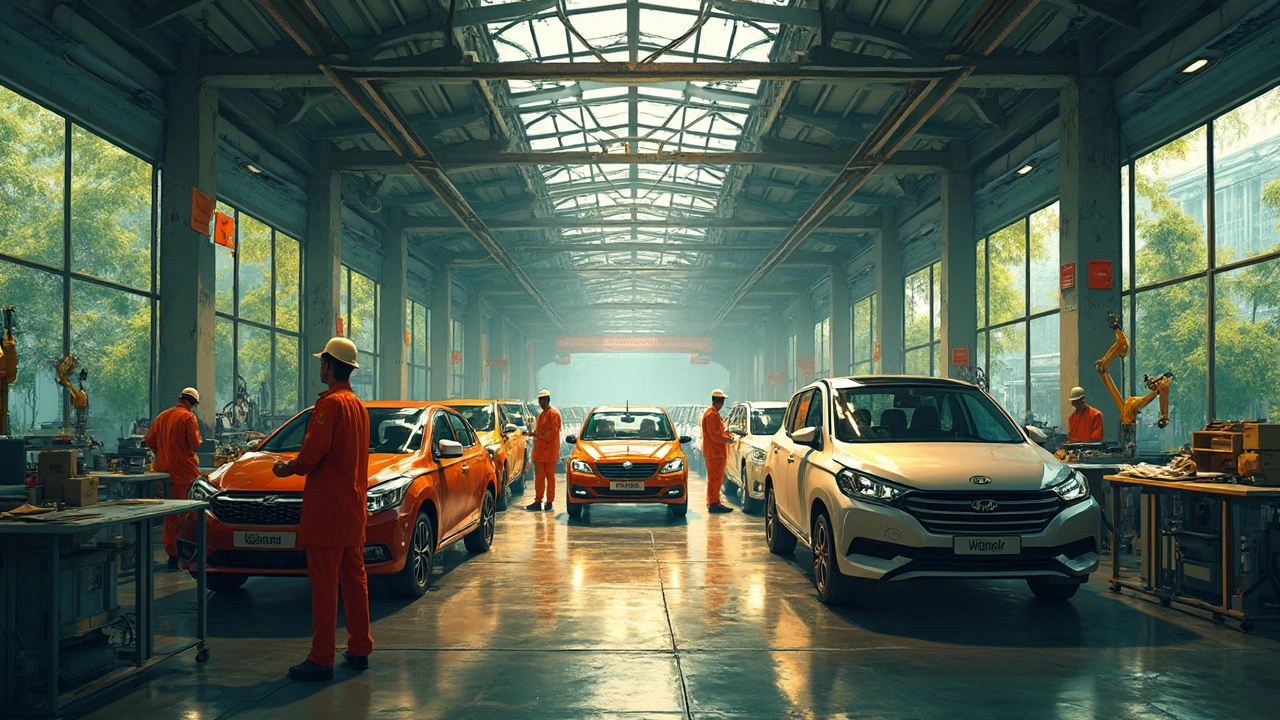Indian Car Brands: What You Need to Know
India’s auto market is buzzing with homegrown brands that pack a punch. From budget hatchbacks to heavy‑duty trucks, Indian manufacturers are shaping how people move and how the economy grows. If you’re curious about which marques dominate the roads, what’s new on the horizon, and why buying a local car makes sense, you’re in the right spot.
Why Indian Car Brands Matter
First off, Indian car makers keep prices affordable for the mass market. By producing locally, they cut import duties and shipping costs, which translates to lower on‑road prices for you. Second, they create millions of jobs—from assembly line workers to design engineers—fueling economic growth in many states. Third, the shift toward electric vehicles (EVs) is driven by Indian firms that understand local charging infrastructure and consumer habits better than overseas giants.
Top Indian Car Brands in 2025
Maruti Suzuki stays the king of volume. Its Swift, Baleno, and new EV model, the WagonR EV, dominate the city‑car segment. The brand’s wide service network and cheap spare parts make it a safe pick for first‑time buyers.
Tata Motors is the rebel that turned green. The Tiago, Nexon, and the all‑electric Nexon EV have won over families looking for sturdy, spacious rides. Tata also owns the luxury Jaguar Land Rover line, but its Indian‑made models keep the brand grounded.
Mahindra & Mahindra focuses on SUVs and tractors. The XUV300 and Thar are popular for their rugged look and off‑road capability. Mahindra’s new e‑Thar promises an electric twist on its iconic design.
Hyundai India isn’t Indian‑owned, but its locally built cars count as domestic for buyers. The Creta and Venue are best‑sellers thanks to sleek styling and strong warranty support.
Kia Motors India follows a similar path, with the Seltos and Sonet offering modern tech at competitive prices. Both Hyundai and Kia benefit from India’s “Make in India” policy, which encourages local production.
Beyond the big names, smaller players like Force Motors and Ashok Leyland dominate commercial and heavy‑vehicle sectors. Their trucks and buses keep goods moving across the country’s vast road network.
What’s exciting now is the rapid rollout of EV models. The government’s push for 30% electric sales by 2030 means manufacturers are rolling out more affordable batteries and setting up charging stations in tier‑2 and tier‑3 cities. If you’re thinking about going electric, keep an eye on the upcoming Tata Curvv and Mahindra e‑Verito.
Buying a car from an Indian brand isn’t just about price; it’s about service reach, resale value, and community support. Most Indian makers offer 2‑year warranty, free roadside assistance, and easy financing options through bank tie‑ups. That makes owning a car less stressful, especially for first‑time owners.
In short, Indian car brands blend cost‑effectiveness, local expertise, and a growing eye on sustainability. Whether you need a city hatchback, a family SUV, or a workhorse truck, there’s a home‑grown option that fits your budget and lifestyle. Keep an eye on the EV rollout – it’s the next big wave for Indian manufacturers and for drivers who want to stay ahead of the curve.
Car Brands Made in India: Full List, Surprises, and What You Should Know
Ever wondered how many car brands are actually made in India? This article unpacks the real players in the Indian automobile scene, explaining which brands have plants on Indian soil and who's simply rebadging imports. You'll get a clear, updated list of major manufacturers, a reality check on popular misconceptions, and some handy insights for car buyers. Plus, discover lesser-known brands popping up in 2025. If you're after facts, straightforward answers, and smart buying tips, keep reading.
Read MoreWhich Car Is Fully Made in India? A Straightforward Look at Homegrown Automobiles
Trying to find a car that's fully made in India can be tougher than you think. This article breaks down which cars are truly built from scratch on Indian soil, which brands lead the pack, and why some models only seem Indian on the surface. You'll also learn how 'localization' works and how to spot if your next car is genuinely made here or just assembled. Get the facts you need before your next car hunt.
Read More





